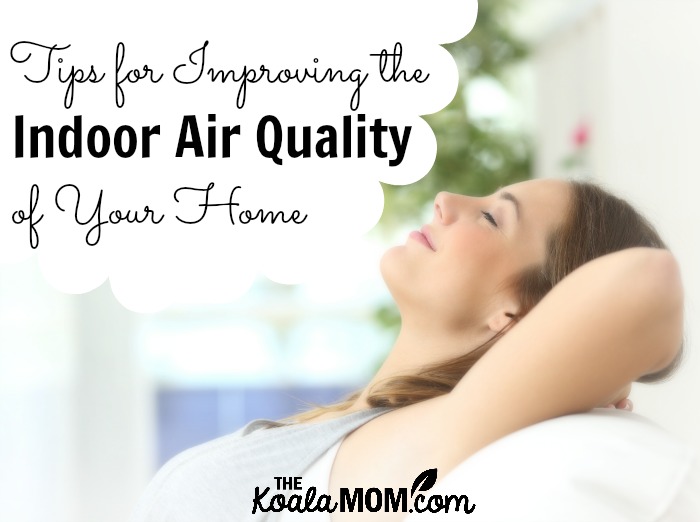As a homeschool mom and a work-at-home mom, I spend a lot of time at home. If we don’t have a planned activity outside the home, we often spend the entire day in the house. As a result, the indoor air quality of our home matters a great deal.
Poor indoor air quality can affect sleep, productivity, and even a child’s grades. Asthma, allergies, fatigue, headaches, and respiratory problems are all linked to bad air in the home. As a stay-at-home-mom, then, it’s important to me to maintain good air quality in our home. Here’s my tips for doing that.

I received compensation for this post, but all opinions expressed are my own.
Open the Windows
As the weather gets warmer, I’m looking forward to opening our windows. I love having a fresh breeze wafting through the house. Installing and maintaining window screens is important to keep bugs and dust or pollen outside. However, an open window can do a lot to refresh the air in your home. Try to open windows on opposite sides of the house to create a draft through your home.
Grow Houseplants
Besides looking pretty, houseplants actually help improve air quality in your home both by adding humidity to the air and by filtering out toxins. Choose plants that are easy to maintain and suited to your space. Even if your home office is in a dimly lit basement, you can find a plant that will thrive there.
Vacuum or Sweep Frequently
I try to vacuum our floors daily. I’m always amazed at how much dirt a family of six can track into and around a small home. Pet dander, dust mites, dead skin and more can collect in the carpets and upholstery of our homes and affect the air we breath. If you’re subject to allergies or respiratory illnesses, cut down on the carpet in your home. Hardwood floors are easier to maintain and less likely to hold dust.

Avoid Cleaning Chemicals
Many common cleaning chemicals are not only bad for bacteria, they’re also bad for you. Cleaning products you spray become airborne and can be inhaled by anyone in the home. If fans are on, airborne chemicals can travel through the home. That “clean” smell we so often appreciate isn’t really a “clean” smell after all. It’s the smell of the chemical used while cleaning. A truly clean house will not smell. For better indoor air quality, replace your household cleaning chemicals with natural cleaning products.
Eliminate Dust Mites
Dust mites are tiny pests that feed on dead human skin cells. They can be found in bedding, mattresses, carpets, upholstery, and curtains. Because they are so tiny, the waste they produce (poop and dead mites) can trigger asthma and allergic reactions. Frequent coughing, wheezing and sneezing at night can be an indicator that dust mites are a problem. To reduce dust mites, wash bedding in hot water once a week. Treat mattresses every two or three months.
Get an Air Purifier
Another way you can increase the indoor air quality in your home is to buy an air purifier. I have an Okaysu Air Purifier to clean the air in our home. This small, quiet air purifier sits in the corner of our living room and gives me peace of mind about our home. It has a medical grade H13 True HEPA filter that can capture and reduce up to 99.97% of airborne particles as small as 0.3 microns, including kitchen odors, pollen, pet dander, pet hair, smoke, household odors, harmful gases like formaldehyde, ammonia, and VOCs.
How would you rate the indoor air quality of your home? What tips would you share for improving it?

No Responses Yet